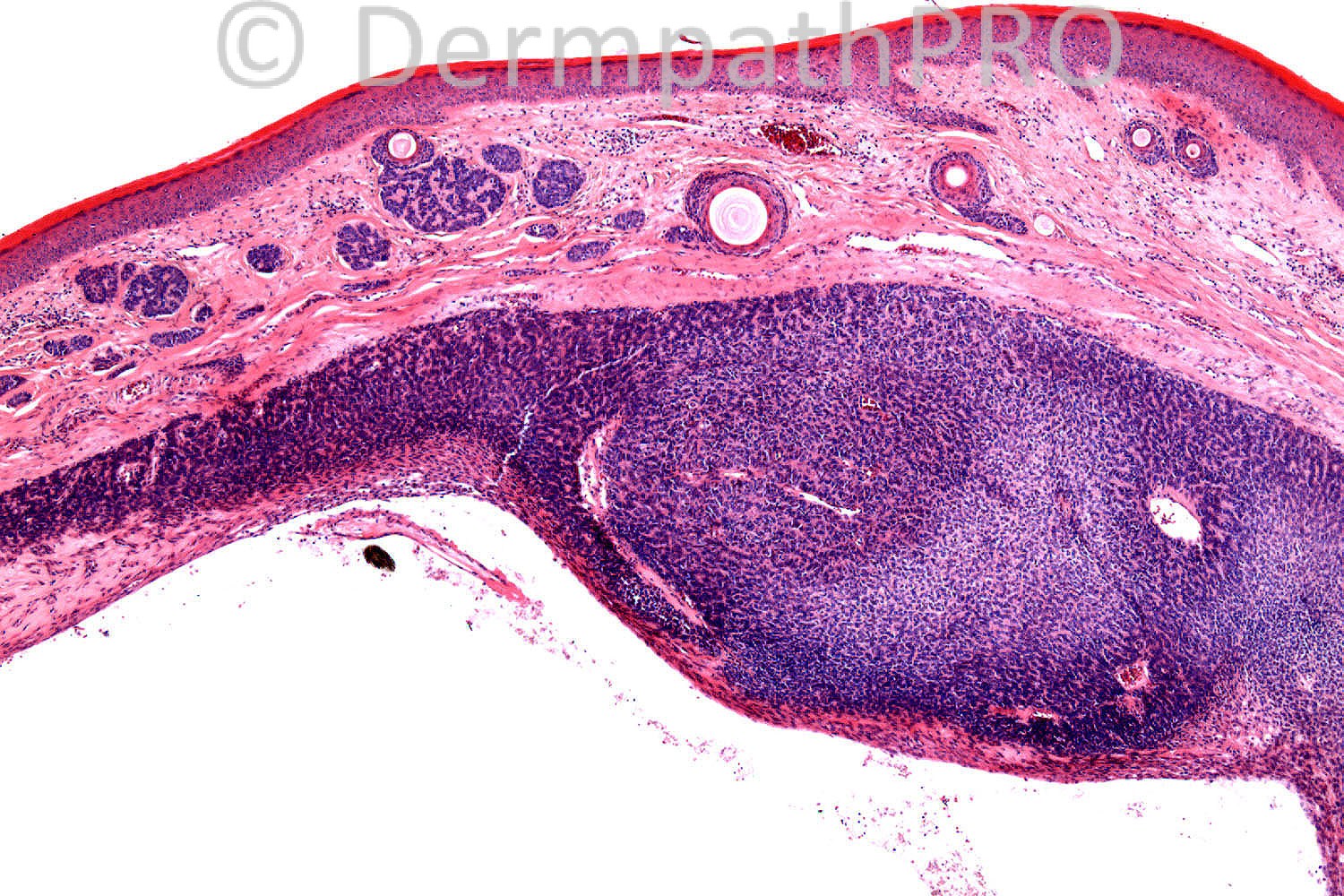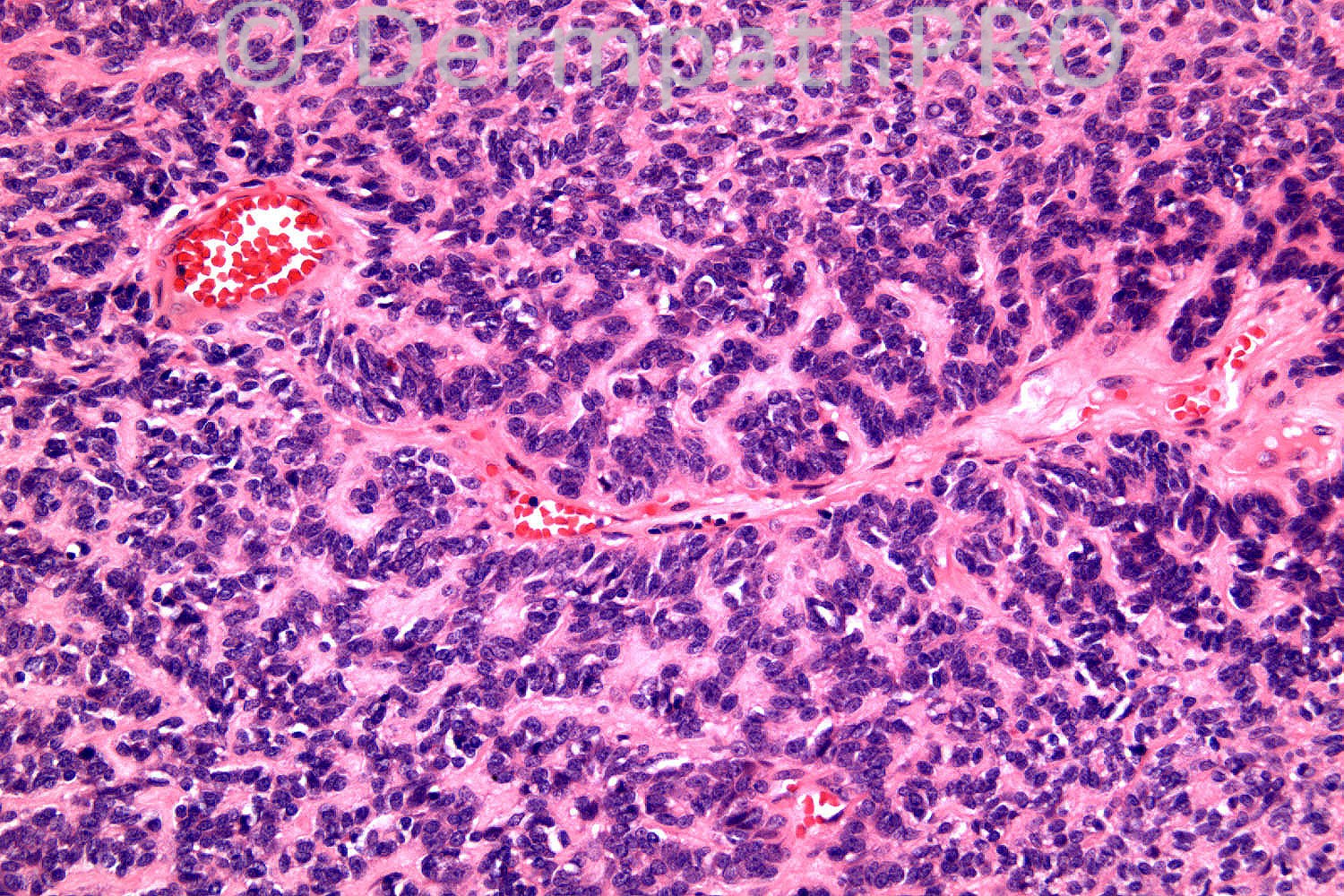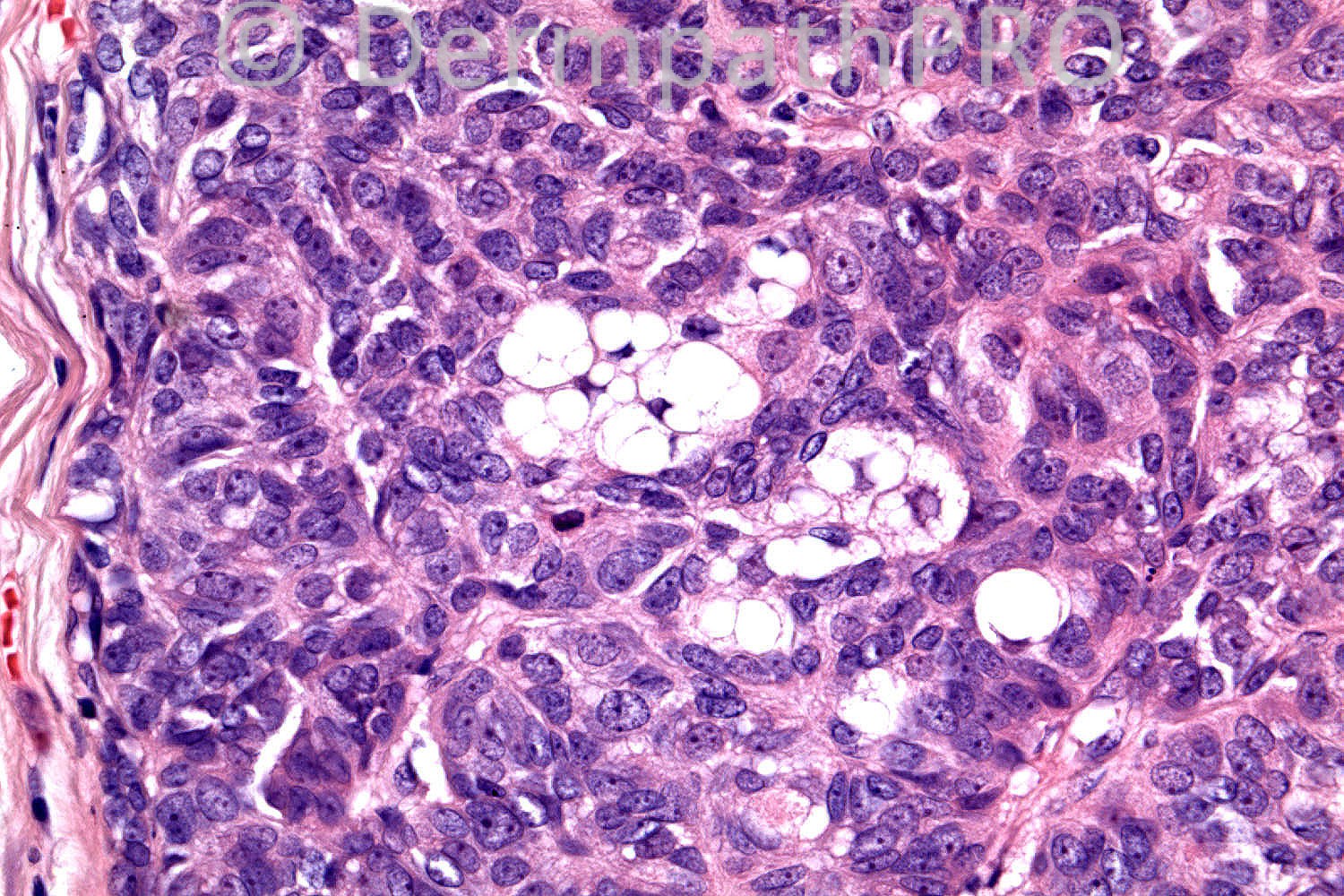Case Number : Case 737 - 12 April Posted By: Guest
Please read the clinical history and view the images by clicking on them before you proffer your diagnosis.
Submitted Date :
56 years-old male. Cyst on scalp for two years. Increased in size. ?Malignant.
Case posted by Dr. Richard Carr.
Case posted by Dr. Richard Carr.





User Feedback